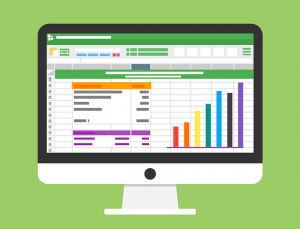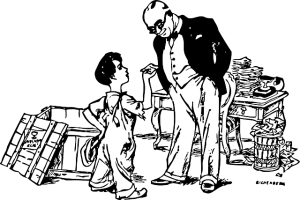Have you ever wondered how big and small companies gather their customer base? With all the people in the world, how do companies select who to market to? Larger companies use mass marketing to market their products, while smaller companies use market segmentation.
What is Market Segmentation?
 Market segmentation is the process of dividing a market of potential customers into groups (segments) based on different characteristics. Because of the different strategies that are used for different consumer groups, it is easier for marketers to personalize campaigns, and engage new customers. This is how target marketing matches marketing efforts to the needs of a specific market segment. By putting the target market into segmented groups, marketers can be more efficient with their time and potentially save money on campaigns. This is a more cost effective way for the company to market their business.
Market segmentation is the process of dividing a market of potential customers into groups (segments) based on different characteristics. Because of the different strategies that are used for different consumer groups, it is easier for marketers to personalize campaigns, and engage new customers. This is how target marketing matches marketing efforts to the needs of a specific market segment. By putting the target market into segmented groups, marketers can be more efficient with their time and potentially save money on campaigns. This is a more cost effective way for the company to market their business.
It is essential for marketers to define the total market for the product that is trying to be sold. Purchasing needs and patterns are two important factors that need to be considered. An example for the total market for a book on newborn babies can be estimated by gathering the total number of women who range in the average age of birthing children.
Once the market is defined, marketers are able to segment it further and break the full campaign off into segments. When choosing the segmentation criteria, it’s important to understand human behavior. Factors such as demographics, geographic area, and psychographics are the three main characteristics to focus on when determining how to market to each segment. Once the criteria is defined, the company then develops segment profiles. A segment profile puts the general characteristics of consumers in the specific segments that may contain age, behavior pattern, and gender. After the segments are created, the company will assess the potential profitability that can come from each segment and then selects them for targeting.
By putting the target market into segmented groups, marketers can be more efficient with their time – potentially saving money on campaigns. This is a more cost effective way for the company to market their business.
Tools of Market Segmentation
Demographic Segmentation
 Demographic Segmentation is the most important criterion for measuring a target market. Marketers usually have good ideas about how big different demographic segments are based on measurable statistics, which can easily be retrieved from the census bureau online. Once they know the size of each demographic, they can use polling data to find the specific tastes and preferences of each group. Groups are usually defined by:
Demographic Segmentation is the most important criterion for measuring a target market. Marketers usually have good ideas about how big different demographic segments are based on measurable statistics, which can easily be retrieved from the census bureau online. Once they know the size of each demographic, they can use polling data to find the specific tastes and preferences of each group. Groups are usually defined by:
- Age
- Gender
- Income
- Marital status
- Education
- Race
- Religion
For example, a liquor company may want to target based on what different age groups prefer to drink. They would set up a poll that suggests the people under the age of 54 prefer beer and anyone over that age prefer wine. This can also be broken down further by splitting the age groups by gender.
Geographic Segmentation
Geographic Segmentation is the process of segmenting a market based on location. Depending on the scope of the business and where it is located, and what type of people they’re trying to attract will determine the geographic segment. This can be done by segmenting by:
- Neighborhood
- Zip code
- Area code city
- State/Province
- Region
Geographic segmentation relies on the assumption that groups of customers in a specific area may have specific product and service needs. For example, pool servicemen focus on suburban areas that are more likely to have a pool. They can further narrow this by focusing on suburban areas with larger elderly populations, who are more likely to be wealthy and not capable of cleaning pools themselves.
Psychographic Segmentation
 Psychographic Segmentation divides the target based on socio-economic class, personality, and lifestyle preferences. There is a scale that is used and it ranges from the highly educated being at the top, all the way down to the uneducated and unskilled at the bottom. Marketers use this type of segmentation to figure out consumers based on their education, economic status, social status and working class. some categories include:
Psychographic Segmentation divides the target based on socio-economic class, personality, and lifestyle preferences. There is a scale that is used and it ranges from the highly educated being at the top, all the way down to the uneducated and unskilled at the bottom. Marketers use this type of segmentation to figure out consumers based on their education, economic status, social status and working class. some categories include:
- Upper middle class where occupations are in upper management, administrative or professional jobs
- Middle class where occupations can be professional but in intermediate management
- Lower middle class where occupations are supervisory, clerical, lower management and junior professionals
- Skilled working class which includes occupations as skilled manual laborers
- Working class which included semi and unskilled manual workers
- Lowest level which are prisoners, widows, widowers, low-grade workers.
Psychographic segmentation is based on the theory that the choices that people make when purchasing goods or services reflect their lifestyle/socio-economic class. Through these classes, market segmentation works to advertise a product within a certain area of people’s interest. They might advertise entry-level jobs to prisoners who were just released from jail.
Target Markets
 These tools above are used in market segmentation and there are different ways that all three of these tools are put together in order to find the perfect market to advertise their product. For instance, a business that sells high tech baby supplies will need to identify a target market. The business will look at the demographics and take a poll on anyone within the millennial age that are more likely to have children and what they prefer as their supplies. Next, they will look at the geographic and psychographic segment and narrow the market to those who have upper management jobs who can afford the high tech baby supplies and who live in maybe an urban region where technology is used in people’s lives every day. Narrowing the target market saves time and money by focusing only on the potential customers who would be most interested – sending advertisements for high-tech baby supplies to retired males is likely just wasting money.
These tools above are used in market segmentation and there are different ways that all three of these tools are put together in order to find the perfect market to advertise their product. For instance, a business that sells high tech baby supplies will need to identify a target market. The business will look at the demographics and take a poll on anyone within the millennial age that are more likely to have children and what they prefer as their supplies. Next, they will look at the geographic and psychographic segment and narrow the market to those who have upper management jobs who can afford the high tech baby supplies and who live in maybe an urban region where technology is used in people’s lives every day. Narrowing the target market saves time and money by focusing only on the potential customers who would be most interested – sending advertisements for high-tech baby supplies to retired males is likely just wasting money.
Campaigns Per Market
Sometimes, marketers have to use different marketing techniques, and campaigns for the same product. If a company is trying to sell a smart phone and they want everyone to buy it but the company has to connect with everyone through different campaigns. The way this is done, is by segmenting the market by different demographics, customer profiles, psychographics and geographic. For instance, creating a segment based off of millennials, teens, adults, and the elderly, the company is able to develop different marketing techniques to target each group and get them to buy the product. Showing that the smart phone is user-friendly may help target the elderly because it may be harder for them to learn new technology. Showing the teenager all the tech features will draw them in, while broadcasting that the smart phone is a great learning tool will allow adults to purchase them and use it as a tool for their children. Smart strategies use different campaigns for different market segments for the same product, trying to hit the features that each market is most interested in.
Customer Profiles
There are also certain variables that are used that contribute to making a customer profile. The customer profile is a description of a set of customers that includes T variables such as buying patterns, brand loyalty, credit worthiness and purchase history. It is important that the marketer understands the potential customer by their buying patterns, their likes/dislikes, how they purchase and their demographics, geographic and psychographics analysis.
For example, if you are a producer of socks and your products are made in America and a percentage of the proceeds go to charity, the customer profile may be based on a group of people who buy more products that are manufactured domestically and who enjoy giving to charity and helping others. Through the customer profile, different market campaigns are generated and sent out to those customers. For instance, reaching out to different age groups requires different forms of communication, the old man in the neighborhood will get a letter/postcard, and the teenager will get an e-mail. Different forms of communication based on customer profiles are a great way to engage with potential customers. This lesson is part of the PersonalFinanceLab curriculum library. Schools with a PersonalFinanceLab.com site license can get this lesson, plus our full library of 300 others, along with our budgeting game, stock game, and automatically-graded assessments for their classroom - complete with LMS integration and rostering support!

Get PersonalFinanceLab
[qsm quiz=168]
